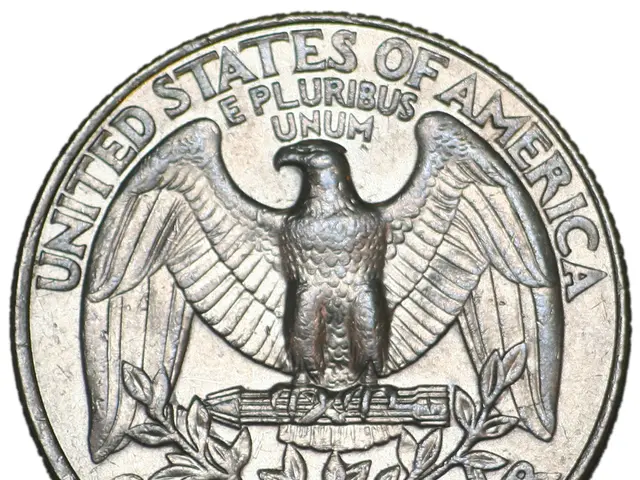Imports of U.S. goods decreased by 20% in April, attributed to Donald Trump's tariffs causing disruptions in international trade.
Records breaking decline in US imports seen in April as tariffs impact influx of goods
U.S. goods imports posted a significant drop of nearly a fifth in April, according to the Census Bureau's advance economic indicators report, which was released on Friday. The decline largely resulted from President Donald Trump's tariffs, causing companies to slow down their shipments to the world's largest economy.
The total imports for April stood at $276.1 billion, marking a 19.8% decrease from March. This decline is the largest on record going back to 1992, serving as a stark contrast to March when businesses rapidly purchased foreign goods before Trump's April 2 tariff announcement.
The import data reveals the most evident picture yet of the disruptions to international trade caused by the president's tariffs. These levies have stirred market volatility and altered U.S. commercial relations worldwide. The slowdown in consumer spending has also been observed, with consumer spending growth decreasing from a month-over-month pace of 0.7% in March to 0.2% in April, as per separate data released on Friday by the Bureau of Economic Analysis.
This fluctuation in imports has distorted quarterly US economic readings. The import surge ahead of Trump's "liberation day" deadline caused US GDP to shrink by an annualized 0.2% in the first quarter of the year, representing the first contraction since 2022. However, the plunge in April imports suggests that GDP could receive a boost from trade in the second quarter.
On Friday, the Atlanta Federal Reserve increased its running forecast for second-quarter GDP growth from an annualized rate of 2.2% to 3.8%, marking the biggest jump since 2023. Meanwhile, JPMorgan adjusted its second-quarter growth rate forecast from 2% to 4%, although they cautioned that swings in trade volumes may complicate measuring underlying growth. They predicted a growth rate of roughly 2% for the first half of the year, giving a more comprehensive picture.
Imports of consumer goods experienced a sharp decline, as per Census Bureau data, sliding 32% to $69.6 billion in April on a seasonally adjusted basis. Industrial supply shipments dropped by 31% to $51.8 billion, while automotive imports fell by 19% to $33.6 billion.
U.S. importers now face a series of levies on foreign goods, including steep tariffs on Chinese products and a universal 10% levy. The status of these tariffs has fluctuated in recent months, leading to confusion among companies and market volatility.
Following a deal two weeks ago between the U.S. and China, the two countries agreed to lower tariffs by 115% on each other's goods, while maintaining an additional 10% baseline tariff. However, tensions seem to be rising again as Trump stated in a Truth Social post that China had "TOTALLY VIOLATED ITS AGREEMENT WITH US."
On April 9, Trump paused the steeper so-called reciprocal tariffs on most countries, but the current set of levies still brings the overall level to multi-decade highs. A U.S. trade court ruled on Wednesday that Trump's "liberation day" tariff scheme was illegal, but an appeals court allowed them to remain in effect until an objection from the government is reviewed.
- The decline in U.S. goods imports, as seen in April, might have resulted from a combination of factors in the economy, markets, finance, and politics, such as President Trump's tariffs and the uncertainty caused by their fluctuating status.
- The impact of these tariffs on the economy can be observed in various sectors, including the general-news category, with the slowdown in consumer spending, industrial supply shipments, and declines in automotive and consumer goods imports.
- The administration's approach to tariffs has caused market volatility, distorted quarterly US economic readings, and has the potential to alter the trajectory of economic growth, as for instance, the recent jump in forecasts for second-quarter GDP growth from the Atlanta Federal Reserve and JPMorgan suggest.







